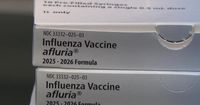Across the United States, the arrival of autumn has brought with it a renewed focus on immunization, as local health departments and clinics ramp up efforts to protect communities from preventable diseases. From Bakersfield, California, to Salt Lake City, Utah, and Edwardsville, Illinois, health officials are rolling out a variety of programs and initiatives aimed at making vaccines more accessible to children and adults alike, especially those in underserved populations.
In Bakersfield, Adventist Health Bakersfield has stepped up to provide free childhood immunizations throughout the rest of October 2025 at various locations across the city, according to KBAK/KBFX. The clinics are specifically open to children under 18 who are uninsured, enrolled in Medi-Cal, or of American Indian or Native Alaskan descent. For many families, this initiative offers a crucial opportunity to catch up on routine vaccinations that may have been missed during the disruptions of recent years.
Parents of children over five are encouraged to schedule appointments by calling 661-869-6740, while those with younger children can simply walk in—no appointment necessary. Priority is given to children under five and their siblings, a nod to the increased vulnerability of the youngest members of the community. To ensure smooth processing, immunization cards are required for all visits. In addition to vaccines, free hemoglobin testing is available for children and expectant or postpartum mothers with a referral from WIC, a school, or a doctor. All clinics operate from 9 a.m. to 2 p.m., making them accessible for working families.
This focus on accessibility and outreach is echoed in Salt Lake City, where the Salt Lake County Health Department has reported a bustling season for flu and COVID-19 immunizations. According to KSL, the department has administered more than 2,800 flu shots since September 15, 2025, and 1,400 COVID-19 vaccinations in the past month. While these numbers are impressive, Troy Davis, a nurse supervisor for the health department, noted that COVID-19 vaccinations have dropped compared to previous years—down from 3,100 in the same period in 2024 and 2,700 in 2023.
For some residents, like Jerry Sempeck, getting vaccinated is now a routine part of staying healthy. “It’s important for me not only to protect myself but to protect others,” Sempeck told KSL. This sense of collective responsibility is a recurring theme among those seeking immunizations, especially as the Centers for Disease Control and Prevention (CDC) continues to recommend getting vaccinated in September or October for optimal protection through the busy holiday season. “That gives you good protection through the holidays,” explained Davis, “that way your body has built up protection by the time you’re hanging out with all of your relatives.”
One notable change this year is the increased accessibility of COVID-19 vaccines. Pharmacists in Utah were granted permission in September 2025 to administer COVID-19 vaccines without a doctor’s prescription, eliminating a significant barrier for many. “I didn’t know if it was going to be available or not, so recently it’s been a little bit uncertain,” said Sempeck. “I’m really glad that I’m able to get this today.”
Kaleem Mohammed, pharmacy manager at Carethera Pharmacy, has observed a shift in vaccination trends this season. “In the years past, I have noticed that everyone was trying to get a COVID shot,” Mohammed said. “But now I noticed that only those who are above 55 and those who have underlying health conditions... they’re getting COVID shots.” He speculated that the greater availability of flu shots compared to COVID-19 shots might be one reason for this trend.
Meanwhile, in Edwardsville, Illinois, the Madison County Board took decisive action to ensure a robust supply of vaccines for its residents. At its meeting on October 15, 2025, the Board approved the purchase of up to $300,000 in vaccines from multiple pharmaceutical companies for the county’s Health Department Immunization Clinic, as reported by The Telegraph. The purchases include up to $40,000 each from FFF Enterprises and McKesson Medical Surgical Government Solutions LLC, up to $60,000 from Merck Sharp & Dohme Corp, and up to $80,000 each from Sanofi Pasteur and GlaxoSmithKline.
The Immunization Clinic, located at the county’s Wood River Facility on Edwardsville Road, offers adult and child immunizations on Mondays, Tuesdays, Wednesdays, and Fridays, from 8:45 a.m. to noon and 1 p.m. to 4 p.m. Appointments are preferred, but walk-ins are welcome—a flexibility that’s likely to benefit busy families and individuals. Insurance cards and photo IDs are required, and the clinic provides all routine adult and childhood immunizations. Additional services, such as infant hearing tests, lead assessment and testing, family health history assessment, and fluoride applications, are also available as appropriate. Residents seeking more information can call 618-692-8954, ext. 2.
The multi-pronged approach taken by these local health departments reflects a broader national effort to regain momentum in public health after the disruptions caused by the COVID-19 pandemic. While the initial urgency surrounding COVID-19 vaccinations has waned somewhat—especially among younger and healthier populations—health officials remain vigilant in encouraging annual flu shots and catching up on missed childhood immunizations.
Underlying these efforts is a recognition that immunization is not just a personal health decision, but a community responsibility. By making vaccines readily available to uninsured children, low-income families, and at-risk adults, public health agencies hope to prevent outbreaks of diseases that can have serious, even deadly, consequences. The inclusion of additional services, such as hemoglobin testing for mothers and children and screenings for hearing and lead exposure, further underscores the holistic approach many clinics are taking this fall.
As the holiday season approaches—a time when families and friends gather, often indoors—health experts continue to stress the importance of timely vaccination. The CDC’s guidance to get vaccinated in September or October is echoed by local health officials across the country, who are working hard to ensure that everyone, regardless of insurance status or income, has the opportunity to protect themselves and their loved ones.
For those who may have questions or concerns about vaccines, health departments and clinics remain open and accessible, offering not just immunizations but information and support. Whether it’s a parent bringing in a toddler for their first shots, a senior seeking a flu vaccine, or a community member with questions about COVID-19 boosters, the message from public health officials is clear: prevention is always better than cure, and now is the time to act.
With expanded hours, walk-in options, and additional health screenings, these initiatives represent a determined push to close gaps in immunization coverage and safeguard public health as another winter—and another holiday season—draws near.




